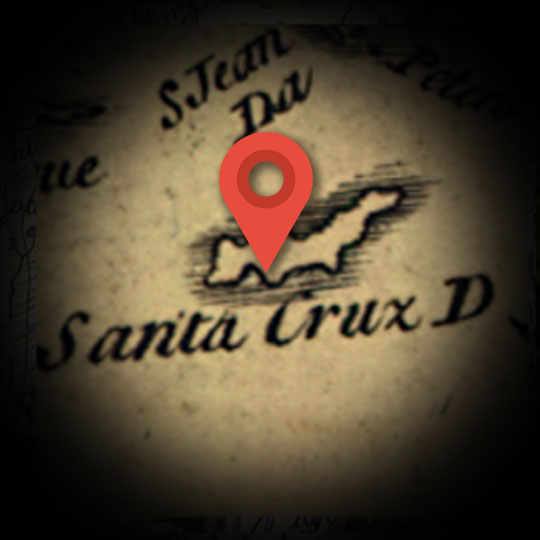ST. CROIX
Explore
While today the island of St. Croix is the largest of the U.S. Virgin Islands, in the lead-up to Alexander Hamilton’s lifetime the location had been fought over by various European colonizers large and small.
The Danish West India Company—a sugar-trading corporation chartered by Denmark’s King Christian V—purchased the land in 1733. Young British subject Alexander Hamilton, therefore, had his first experience of being a foreign immigrant when he arrived on the island around 1765.
Hamilton lived in St. Croix’s capital city of Christiansted with his mother and older brother. They inhabited the upstairs rooms of a building at 34 Company Street, the lower floor of which Hamilton’s mother operated as a small shop. Despite personal economic struggles, the family still kept a small number of enslaved people.
Since Hamilton’s father James Hamilton Sr. abandoned the family shortly after their arrival in the Danish territory, these were turbulent yet formative years for the future founding father. It was in Christiansted that Hamilton (probably aged no more than 11 years) became regularly employed as a clerk at the trading firm of Kruger & Cortright.
Hamilton’s mother, Rachel Lavien, died of a tropical illness in February, 1768. This left her orphaned sons charity cases to be looked after by distant relatives and benefactors like merchant Thomas Stevens, who eventually took Hamilton in.
In the aftermath of a devastating hurricane in August 21, 1772, the young Alexander Hamilton published the now-celebrated “Hurricane Letter” that inspired his mentors and employers, and the townspeople of Christiansted, to take up a collection to send him to the British colonies in mainland North America to seek a college education.
Hamilton left St. Croix bound for New York City in 1773.
Hamilton would never return to the Caribbean, and his surviving brother, James Hamilton Jr., would never leave.

TIME FRAME:
1765-1773
